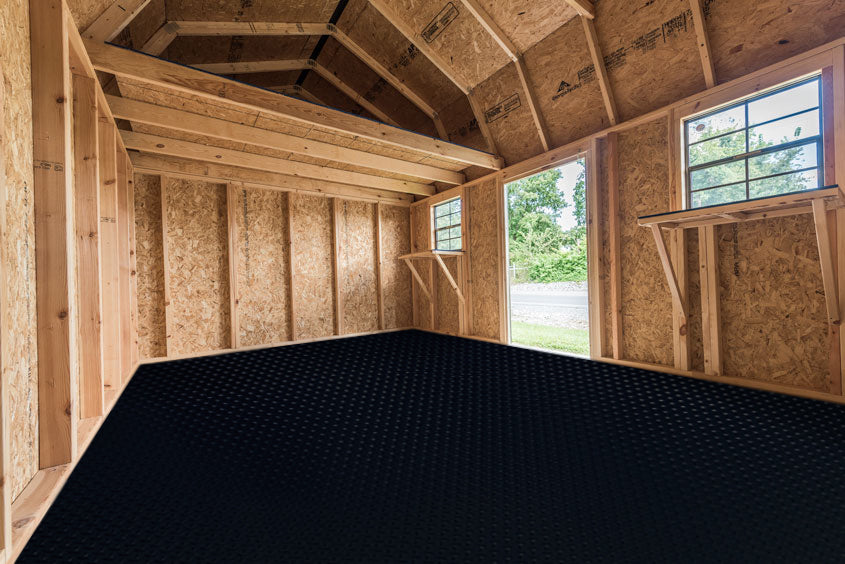
Whether your shed is used for utility or equipment storage, a work shed or even a She-Shed, your shed flooring should serve its intended use.
To determine the best flooring for a shed, let’s look at these top shed floor covering options.
1. Concrete Shed Slab: A sturdy foundation, concrete is cold, hard, unwelcoming and stains easily. You can cover with a costly epoxy sealer or paint which takes time and curing, or loose lay floor covering to hide floor imperfections.
2. Wood Plank Floor: More inviting, without pre-treatment its time is limited. Wood gets slippery when wet, rots and attracts pests. For protection, you’ll want to use a floor covering for wood shed floor which is an extra expense.
3. Old Carpet: Remnants add a plush, comfortable, indoor-like floor for a shed. But… carpet isn’t moisture-proof, is hard to clean and isn’t a good for storing mowers, ATVs, or other machinery that leak oil, gas, corrosives or chemicals.
4. Vinyl Roll Out Shed Flooring: When you need the most durable, waterproof, slip-resistant shed flooring, there is no downside to affordable, comfortable vinyl flooring rolls. Cleans with soap/water; trims to fit. Vinyl withstands extreme temperatures and weather. It resists common chemicals and staining from oil, gas, transmission and brake fluids. Available in a variety of mat sizes, colors and patterns for any use.
5. Vinyl Shed Peel & Stick Tiles: With a little time and creativity, this flooring option is another solid choice that ticks off the same boxes above.
G-Floor® has the vinyl flooring solution for every shed.

